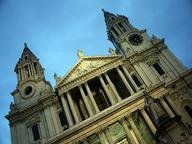Quiz Answer Key and Fun Facts
1. You try to make yourself comfortable behind the wheel in the cramped space of the right front seat and gaze out the window to the right, looking for the rearview mirror. "Ah, yes, the mirror's on the left along with the rest of the car," you realize, feeling a bit sheepish. After adjusting the mirror, you pull carefully out into traffic and accelerate to a comfortable 20 mph. Oh my, traffic is sure piling up behind you in a hurry. What is the speed limit in built up areas (unless otherwise indicated)?
2. Leading a lengthening line of disgruntled UK drivers, you come to your first roundabout. Slamming on your brakes, you stare in puzzlement at a dashed, white line on your side of the road at the entry point to the roundabout. What does this line indicate?
3. The honking horns of the line of cars behind you are encouraging you to take the plunge and enter a British roundabout for the first time. In which direction(s) should you look for oncoming traffic (assuming traffic in the roundabout is obeying the traffic laws)?
4. Having looked for traffic, you feel that it is now safe to attempt to traverse a British roundabout. This is a mini-roundabout that controls traffic at the intersection of two perpendicular roads. You have been instructed to "drive through" the roundabout. You wonder how literally to take this instruction. If there is no traffic, are you allowed to pass over the painted island in the center of the roundabout or must you steer around it?
5. You have driven through your first British roundabout without being killed, but you are now coming to a second roundabout at which two perpendicular streets intersect. Here, your were instructed to turn right. There are now two lanes of traffic going in your direction and entering the roundabout. The left lane has an arrow pointing left; the right lane has a double arrow with one arrow pointing straight and the other to the right. What would be the most proper course of action?
6. You have just turned from a British roundabout onto a typical, two way residential street in a London suburb. This means, of course, that wherever cars are parked, there is room for only one car to pass. Another car is coming from the opposite direction and the two of you will soon be at opposite ends of a line of parked cars that will allow only one of you to pass by at a time. The other driver flashes his high beams. What is the other driver most likely indicating?
7. You are driving back to your bed and breakfast in the London suburb of Harrow. Before leaving your bed and breakfast to pick up your rental car you asked your host how to determine the side of the street on which to park on streets where parking on both sides would completely obstruct traffic. Which of the following was most likely his answer?
8. Driving for the first time in Britain, having picked up your family at a bed and breakfast in the London suburb of Harrow, you have managed to gain entry to a roadway labeled "M25", which resembles an American freeway. Curiously, there are no identifiable speed limit signs; instead there are frequent signs saying "speed camera". Your travel guide book has informed you that passing such devices at an excessive rate of speed can result in a tersely worded letter from British authorities with an attached bill. If not posted, what is the speed limit on a British motorway?
9. You have just left a British village that had a posted speed limit of 30 mph and are now driving on an undivided road with one lane of traffic in each direction in a non-built up area. You pass a circular white sign with a wide black diagonal bar going through it. What does this sign indicate?
10. Driving on a dual carriageway, you notice frequent occurrences of a circular blue sign with a red rim and a red cross through the blue circle. You are surprised to find that none of the people you ask are sure of the sign's meaning. Which of the following actual guesses made by genuine UK natives does the highway code indicate is the proper meaning of the sign?
Source: Author
uglybird
This quiz was reviewed by FunTrivia editor
bloomsby before going online.
Any errors found in FunTrivia content are routinely corrected through our feedback system.

